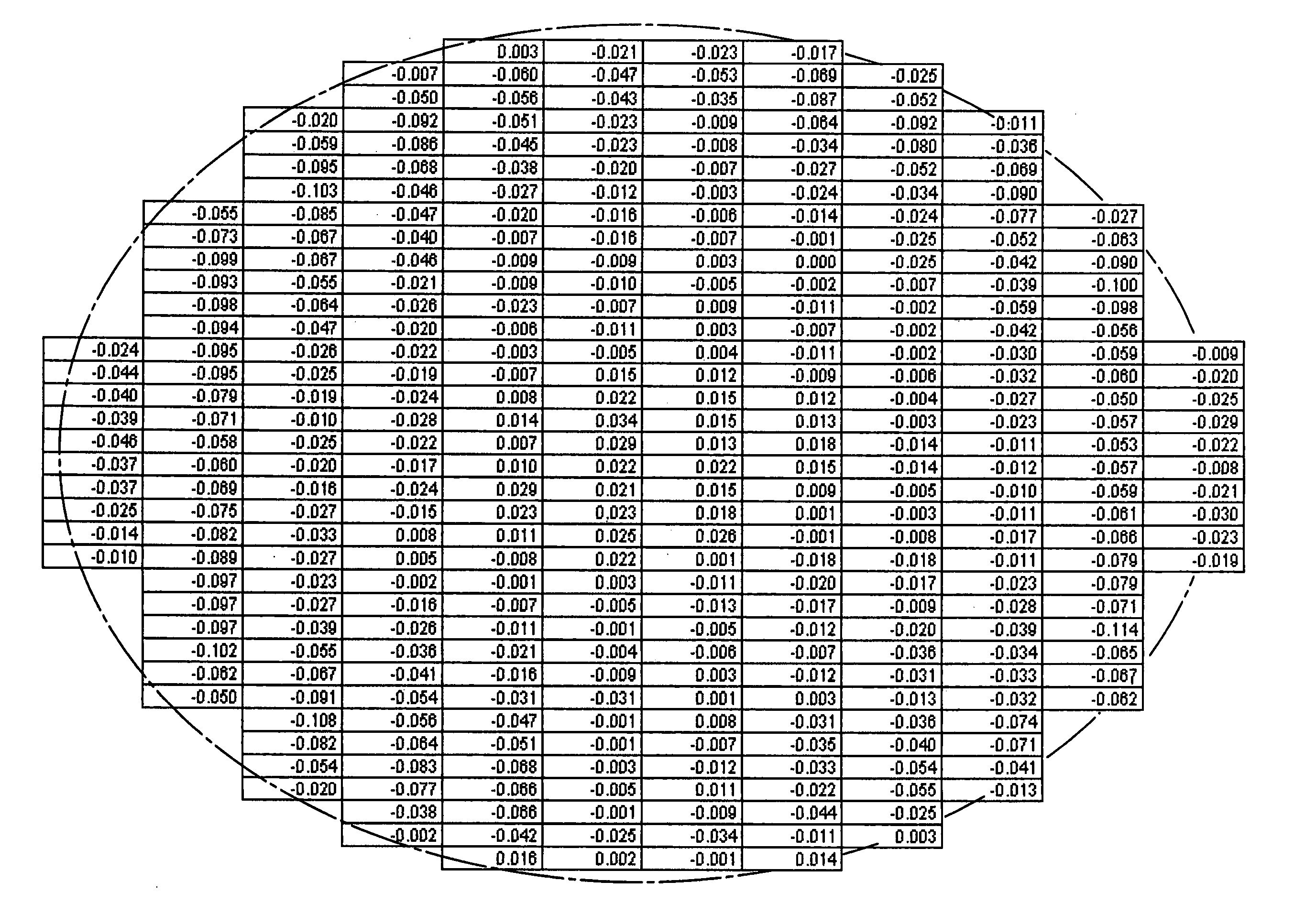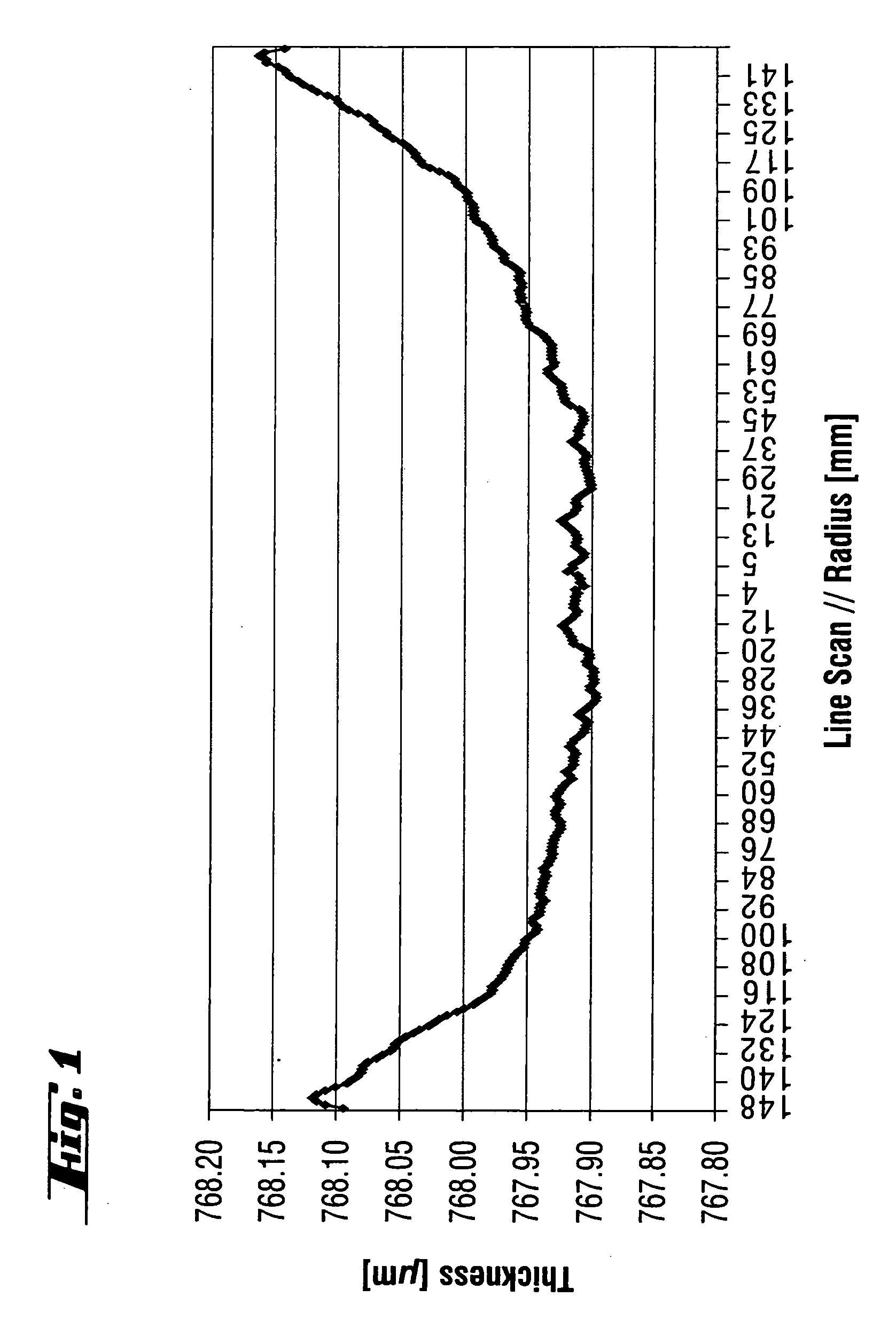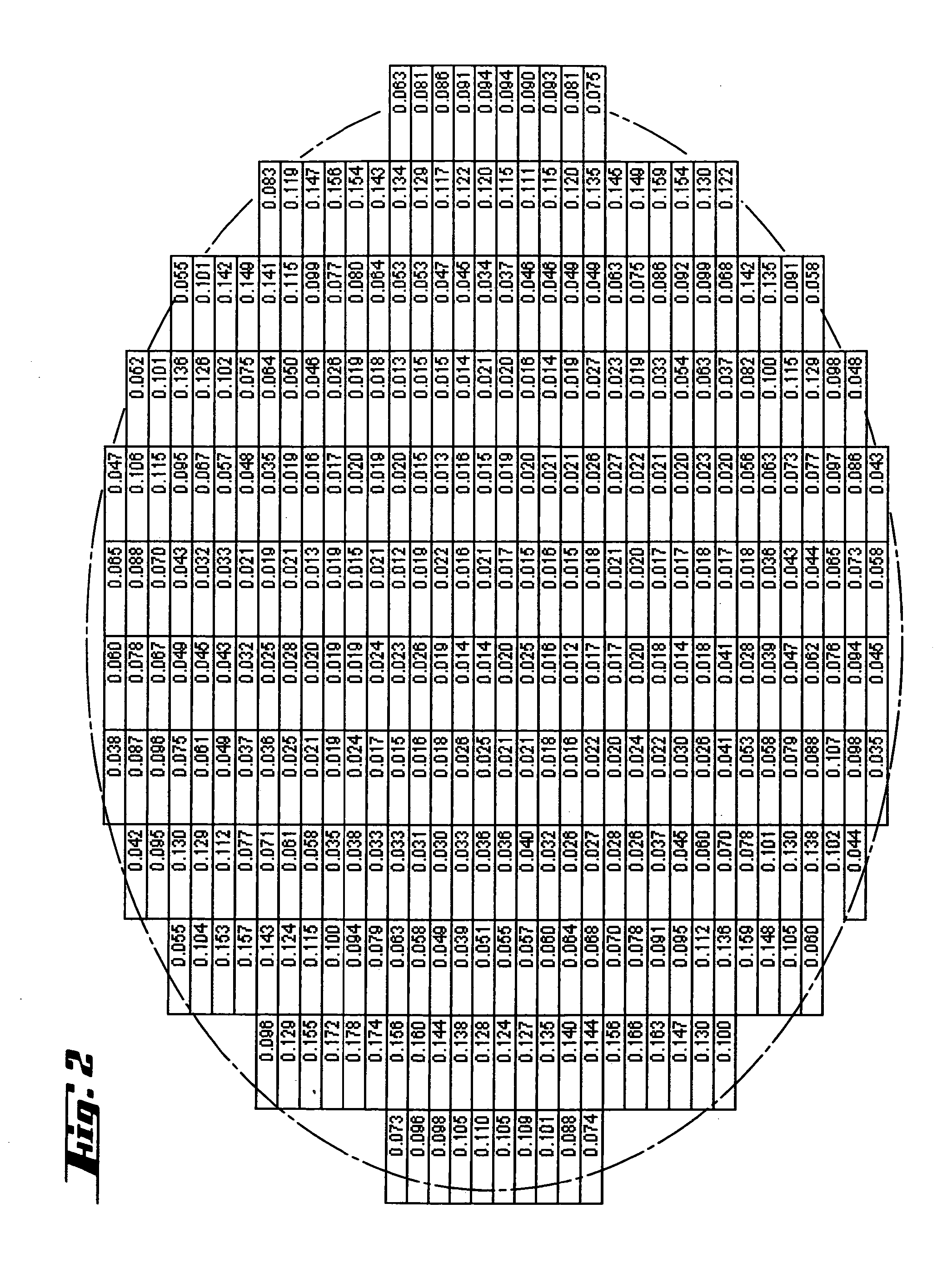Epitaxially coated silicon wafer and method for producing epitaxially coated silicon wafers
a technology of epitaxial coating and silicon wafer, which is applied in the direction of polycrystalline material growth, chemically reactive gas growth, crystal growth process, etc., can solve the problems of uneven thickness of the inability to produce epitaxial coating silicon wafers with good global flatness, etc., to achieve the effect of improving global flatness and reducing hydrogen flow
- Summary
- Abstract
- Description
- Claims
- Application Information
AI Technical Summary
Benefits of technology
Problems solved by technology
Method used
Image
Examples
example
[0056] An epitaxial layer was deposited on a silicon wafer having a diameter of 300 mm that had been polished by means of CMP on its front side, in accordance with the prior art. The silicon wafer was concavely polished, that is to say had a concave initial geometry and an edge roll-off. During pretreatment of this silicon wafer in the epitaxy reactor, first, a pretreatment in a hydrogen atmosphere was effected at an H2 flow rate of 50 slm.
[0057] During a subsequent pretreatment, with hydrogen chloride added into the hydrogen atmosphere, the H2 flow rate was reduced according to the invention, to 5 slm. The duration of the pretreatment with hydrogen chloride was 60 s. An epitaxial layer was subsequently deposited at a deposition temperature of 1120° C. and a trichlorosilane flow rate of 17 slm. The results are explained below with reference to FIGS. 1 to 6, whereas FIGS. 2, 4 and 6 show schematically the geometry of the circular silicon wafers in perspective.
[0058]FIG. 1 illustrat...
PUM
| Property | Measurement | Unit |
|---|---|---|
| temperature | aaaaa | aaaaa |
| flatness | aaaaa | aaaaa |
| size | aaaaa | aaaaa |
Abstract
Description
Claims
Application Information
 Login to View More
Login to View More - R&D
- Intellectual Property
- Life Sciences
- Materials
- Tech Scout
- Unparalleled Data Quality
- Higher Quality Content
- 60% Fewer Hallucinations
Browse by: Latest US Patents, China's latest patents, Technical Efficacy Thesaurus, Application Domain, Technology Topic, Popular Technical Reports.
© 2025 PatSnap. All rights reserved.Legal|Privacy policy|Modern Slavery Act Transparency Statement|Sitemap|About US| Contact US: help@patsnap.com



